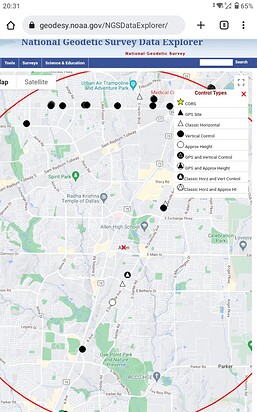Based on a recommendation I read in this community, I decided to put a point down using OPUS and see if I can replicate nearby city monument coordinates. I performed 3 base observations over a few weeks, 8/6/5 hours, to see how they performed and they are all within 12 millimeters of each other horizontally.
I then placed my base over the same point I took observations from, averaged the three points and entered those coordinates as my base. I went to 3 monuments our city has placed out, configured Emlid Flow to transform to NAD83(2011) / Texas North Central ftUS + NAVD88 ftUS (EPSG 6584 + EPSG 6360.)
I am off almost the exact same distance, in the exact same directions at each monument, both Northings and Eastings. 3.47 feet E as an example.
Is there a different coordinate system I should choose in Emlid Flow than EPSG 6584?
Or is their data off and I picked a dandy 1st project? They list: NAD83/NAVD88 as the coordinate system. Texas North Central (4202).
Northing: 7098857.211
Easting: 2528659.057
Lat: 33 07 47.76134
Lon: 96 40 14.21816
Converting state plane to Lat/Long and vice versa on Earthpoint and via NCAT, I can’t get the coordinates they are listing for this monument to reconcile. NCAT and Earthpoint agree when I use the monument Lat/Lon - they both produce the same Eastings and Northings.
I am probably answering my own question, but is there something I am missing, like the use of combined scale factor? When presented with Texas North Central 4202, that doesn’t have an EPSG code from what I can tell, what adjustments should I make, if any, when configuring Emlid Flow?
Thank you for participating in my struggle to learn accuracy!




